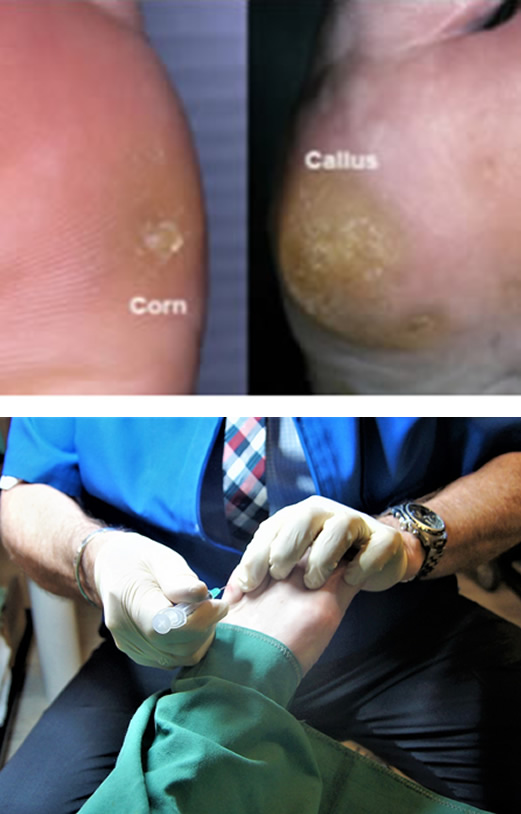Prolotherapy – Sclerosing

Prolotherapy or Sclerosing Technique is used to treat lesions such as neuromas, adhesions and chronic recurrent corns.
There abnormalities commonly referred to as corns, calluses, helomas, hyperkeratosis or Tylomas.
These are a result from the stimulation of the epidermis, and form on the weight bearing and pressure areas of the foot.
Unfortunately, these areas don’t respond to normal debridement and padding.
The procedure is an injection technique where the bevel edge of the needle is used as a micro scalpel, releasing the underlying adhesions and then a solution is injected into the area to lift the epidermis from the underlying dermis.
This allows the infiltration of blood vessels and thus increases the circulation to the area.
The costs are covered by most health funds and include 3 visits over a four-week period. The success of the treatment is varied and is associated with each patient.
We usually expect an improvement of up to 80% of symptoms within a 3-month period. This in-house procedure is carried out by our Senior Podiatrist, with before and after care provided by our caring staff.
Nerve Blocks – Chronic Foot pain
Nerve blocks are generally recommended for a patient who is in a cycle of Chronic foot pain. Chronic foot pain is a cycle that develops if existing pain persists for more than a 3-month period.
This problem is known under many names including, causalgia and reflex sympathetic dystrophy.
How this occurs is the part of the brain, (hypothalamus) sets up a cycle to protect an area of the body that has seen major and, in some cases, minor tissue damage.
The cycle is continuous even if the underlying original problem has been removed. The most common types include lower back pain, knee and ankle injuries. Physiotherapy, massage and medication are all ways of managing the pain, however they don’t always end the cycle of continued chronic foot pain.
A faster and more effect treatment now in common use is the method of using peripheral nerve blocks. This is where a long acting anaesthetic is used to block the original pain area, for a six to eight-hour period. This is very effective in breaking the chronic foot pain cycle, and so allows the body to heal itself with other modalities.
The need for post-operative painkillers are reduced, alongside with the reduced risk of gastrointestinal upset. In studies it has shown significantly better pain control at 6, 12, 18 and 24 hours postoperatively.

Mole scan: Skin Melanomas of the Feet

Skin Melanomas can develop anywhere on the body, including the feet. Unfortunately, the skin area of the feet is often overlooked during routine medical examinations.
Melanoma is a cancer that is very invasive. When they are in areas of high stress the metastasis breaks off and can enter the blood stream where they lodge in various organs, lungs, liver and lymph nodes.
As we seldom inspect our feet, especially the bottom of the foot your Podiatrist is often the person to notice any suspicious lesions. AMA Podiatry now has the equipment for early detection of any suspicious lesions thereby expediting any necessary treatment.
We will recommend a visit to your local doctor for further investigation of any lesions.
Alex and the team at AMA Podiatry are experienced in all the above procedures and would be happy to discuss the relevance of such treatments in your care regime. And recommend referral to your consulting GP for further investigation if required.
More Information or Make a Booking
For more information on how we can help you, please call us on 9576 9495 or complete our enquiry form: Enquiry Form
